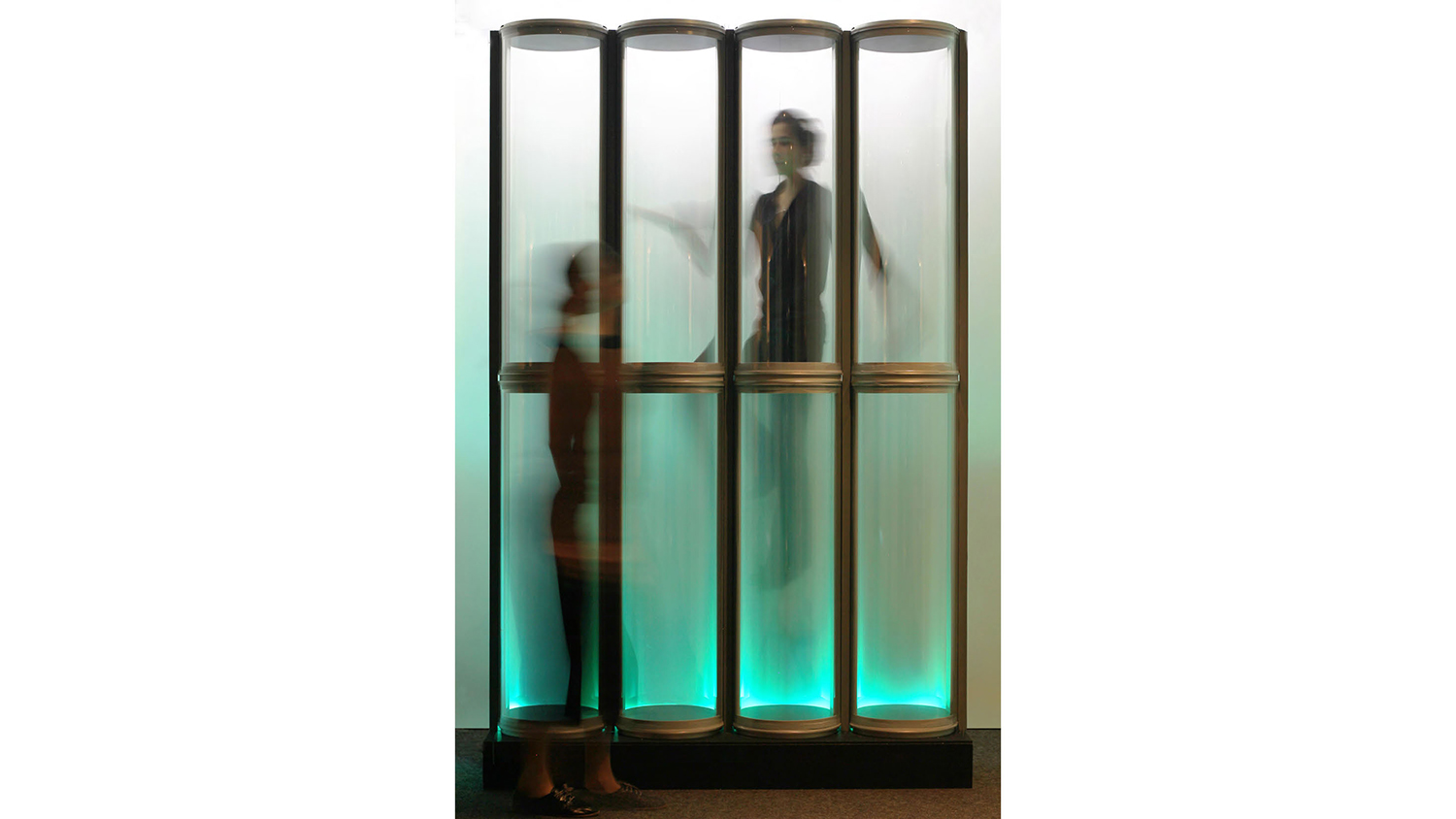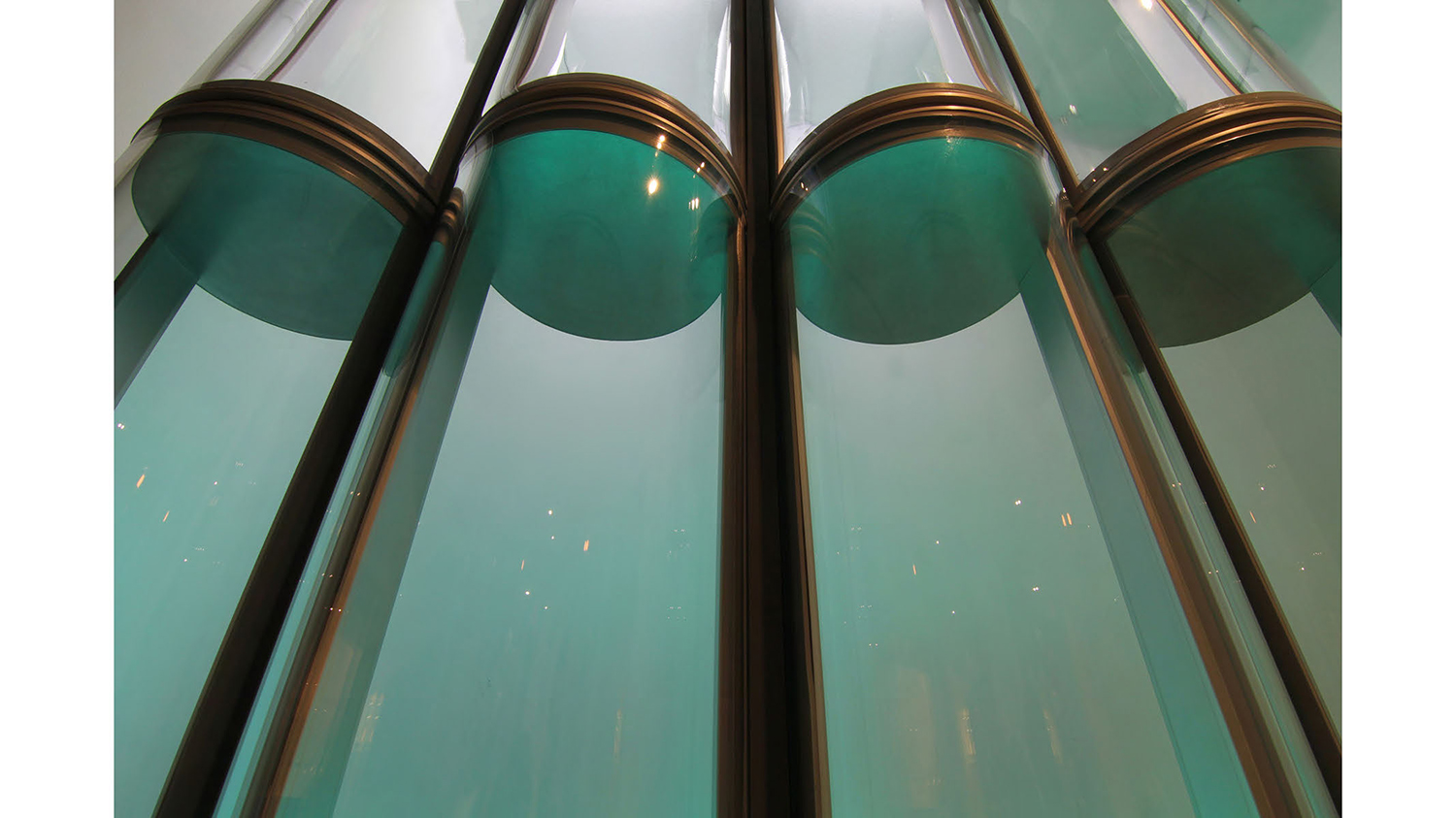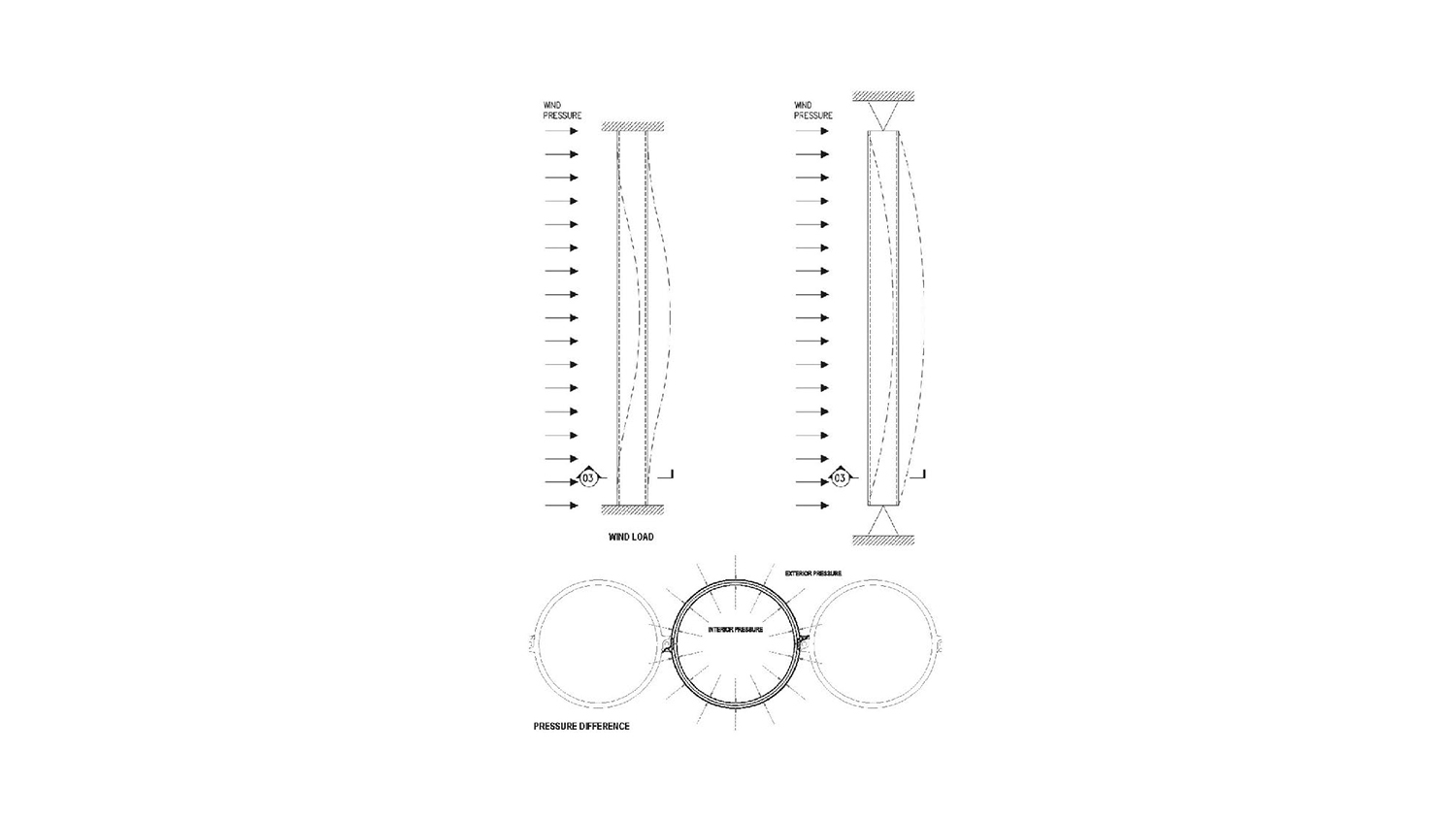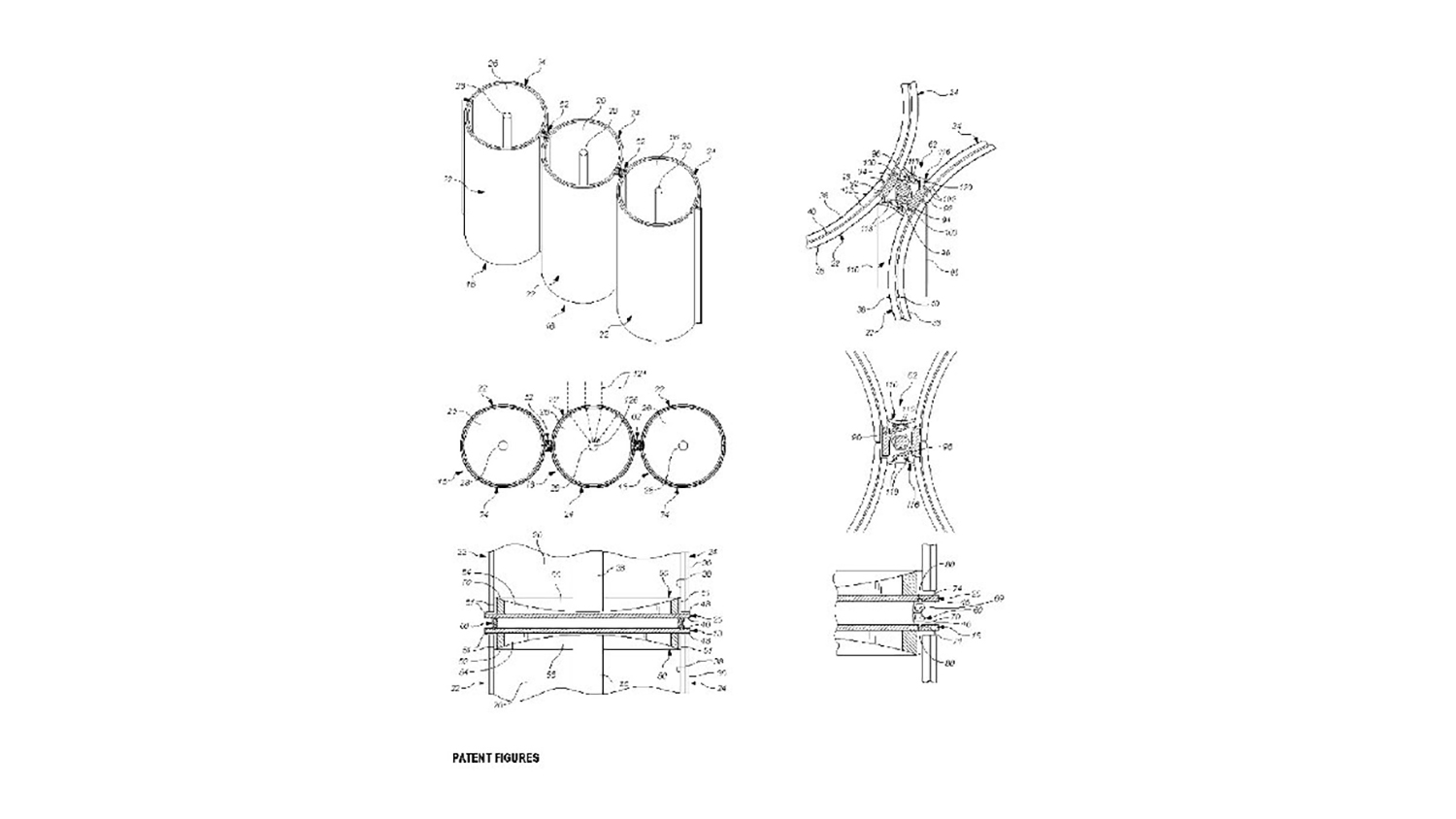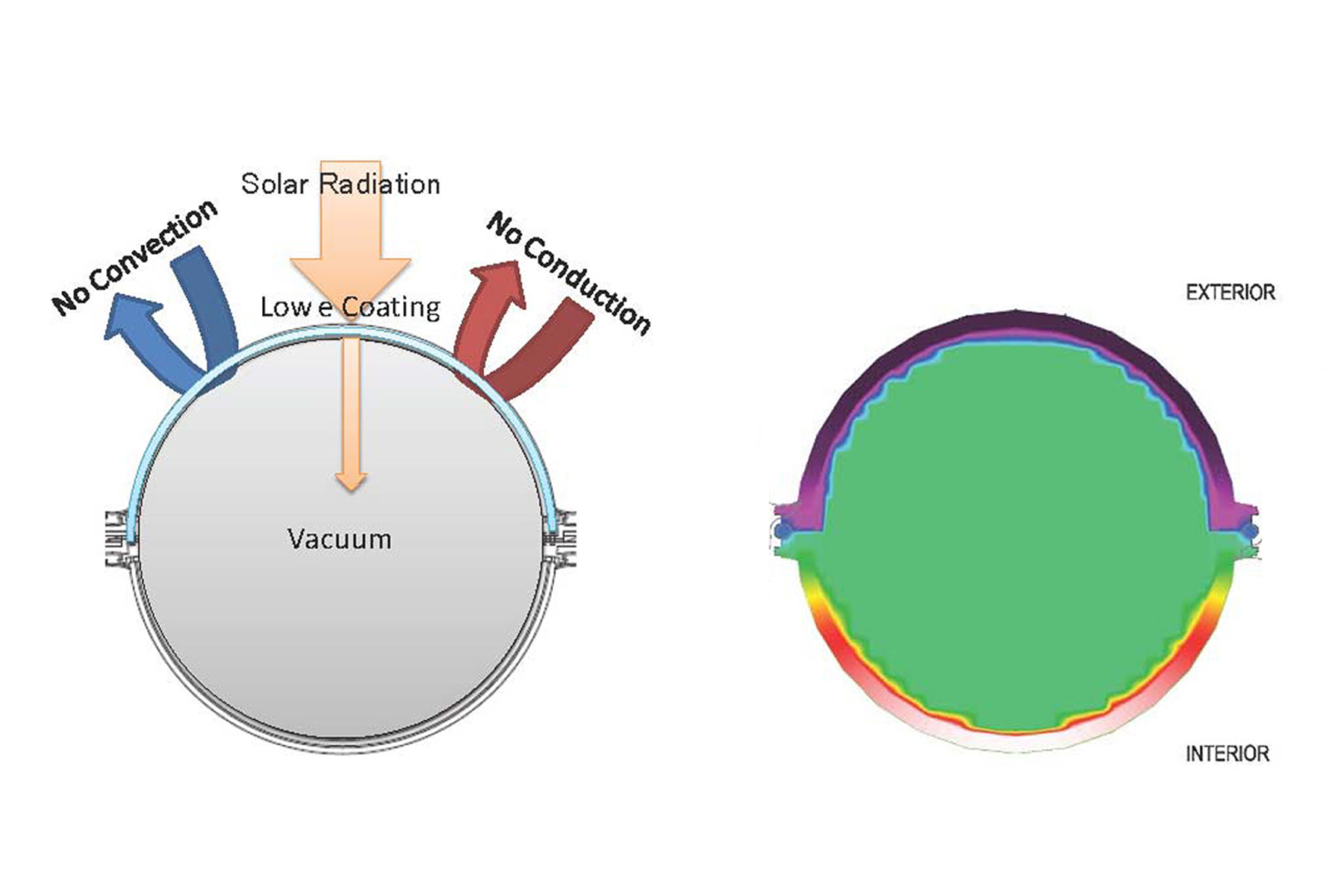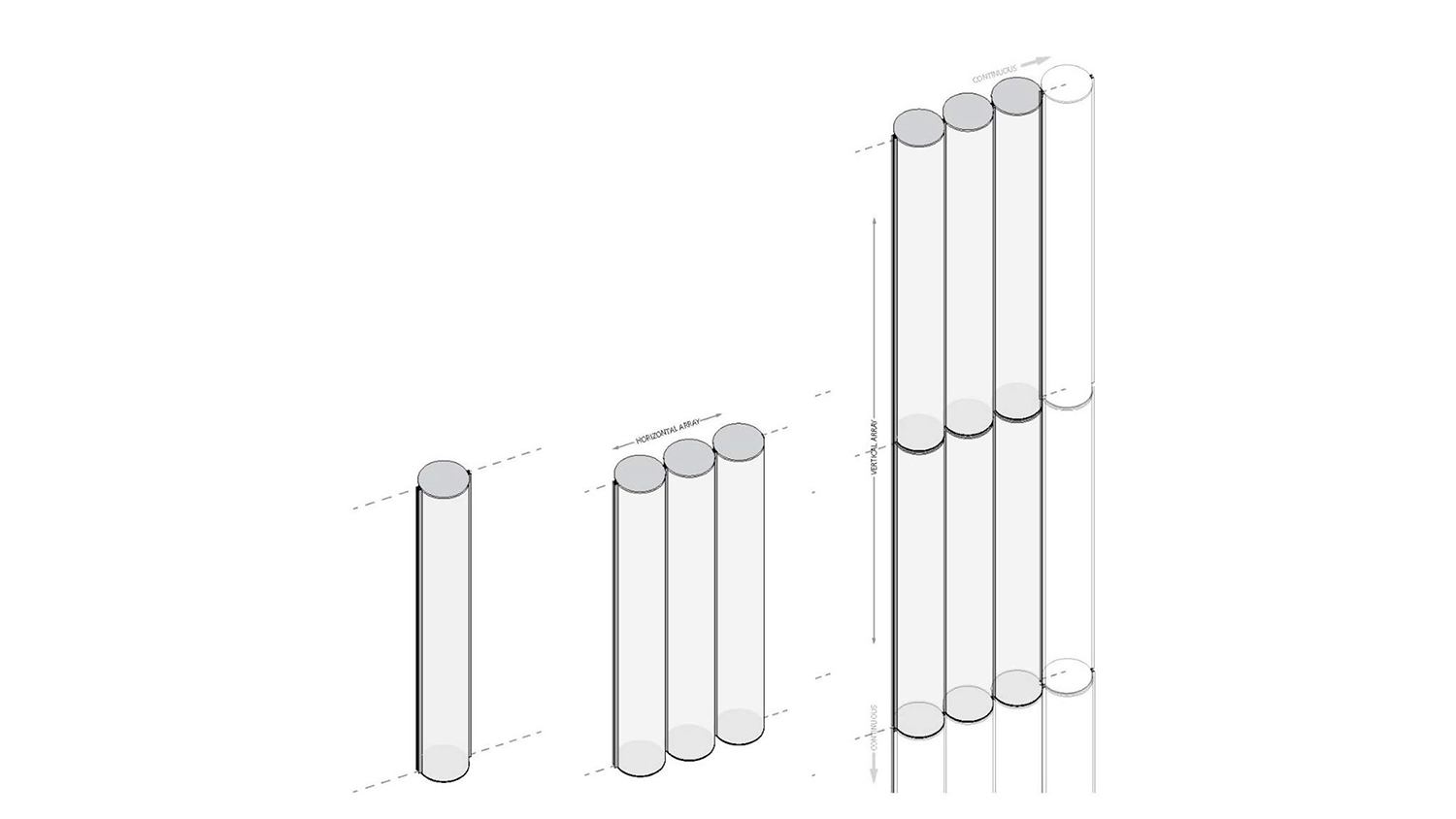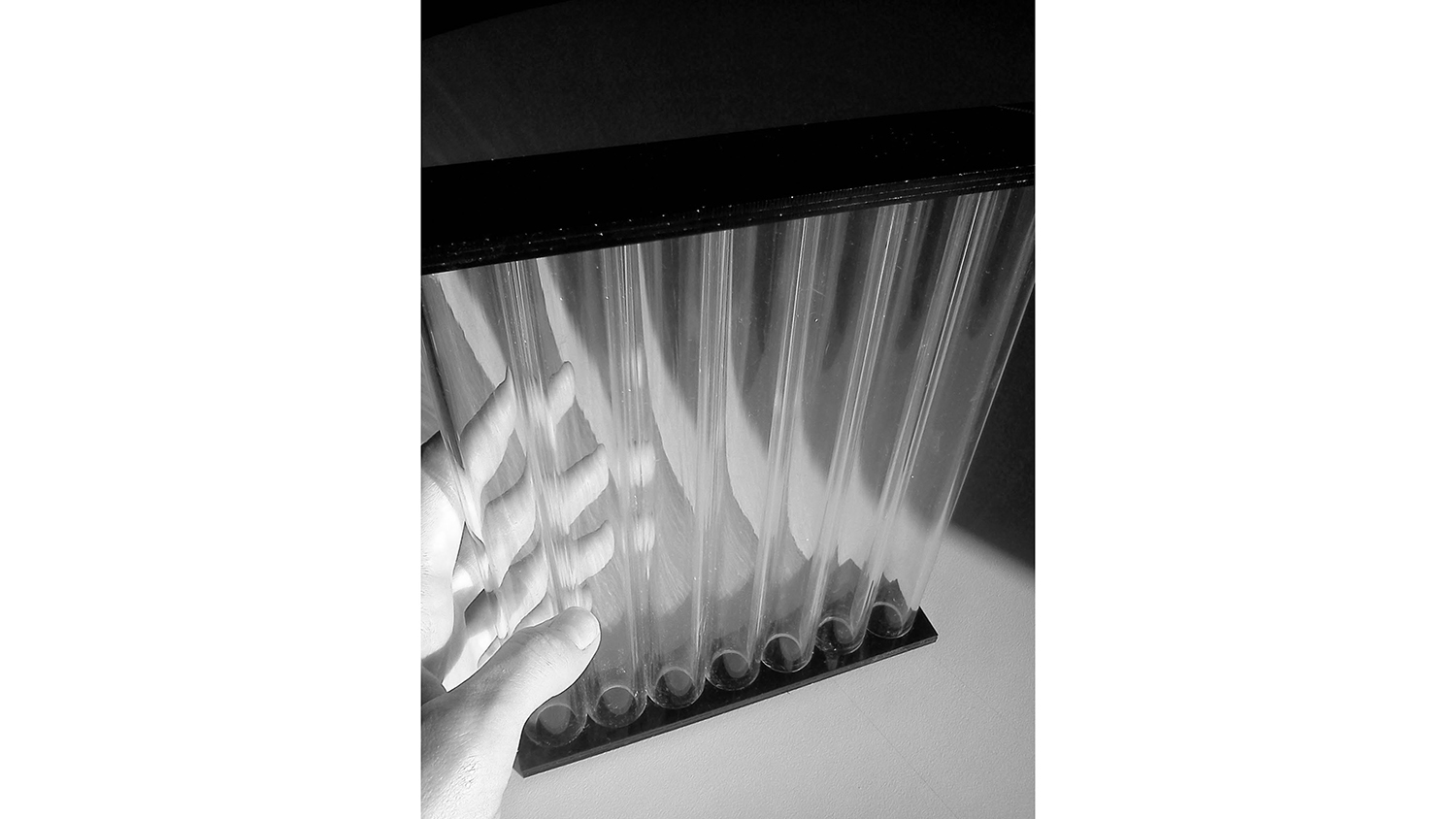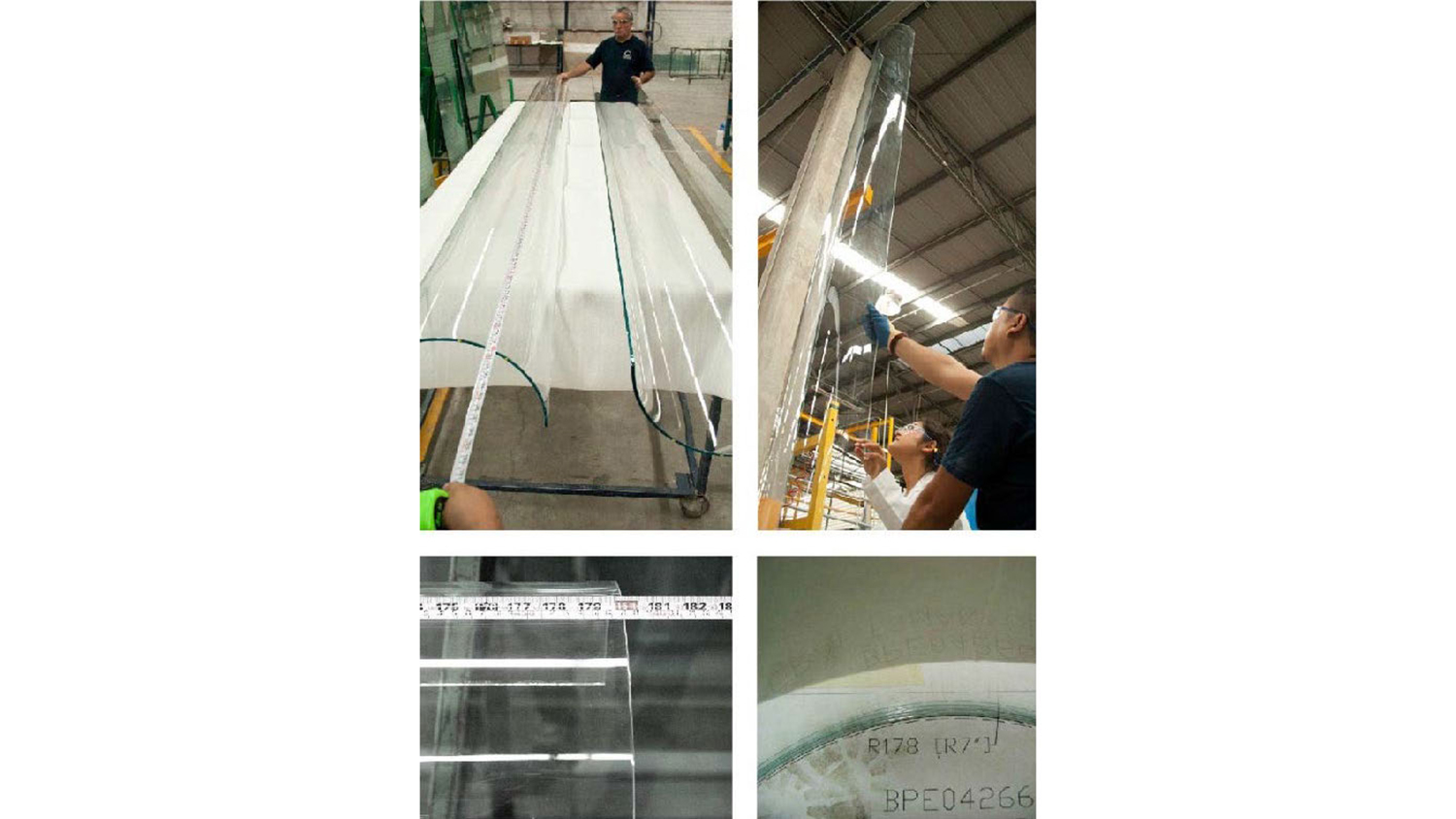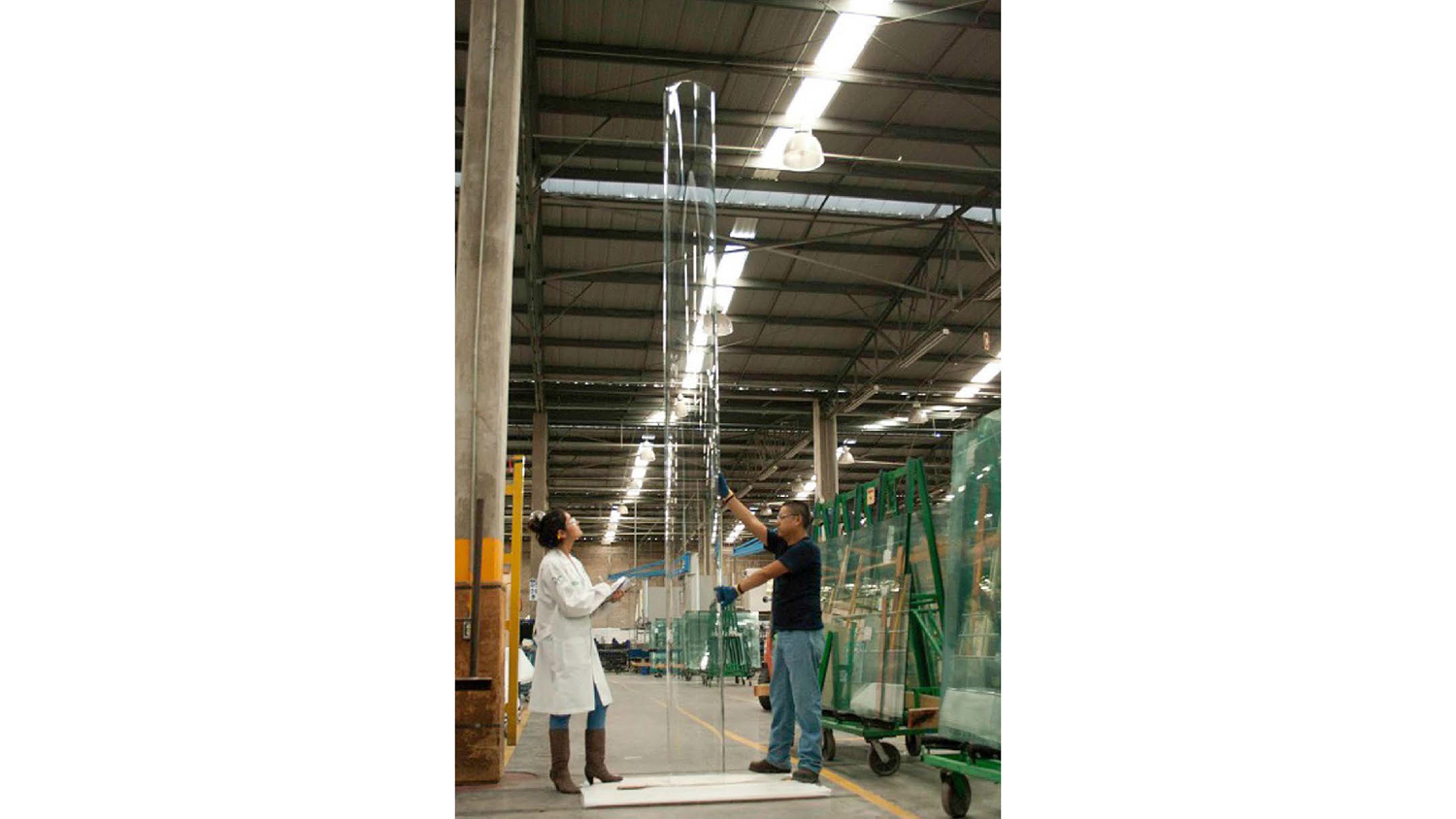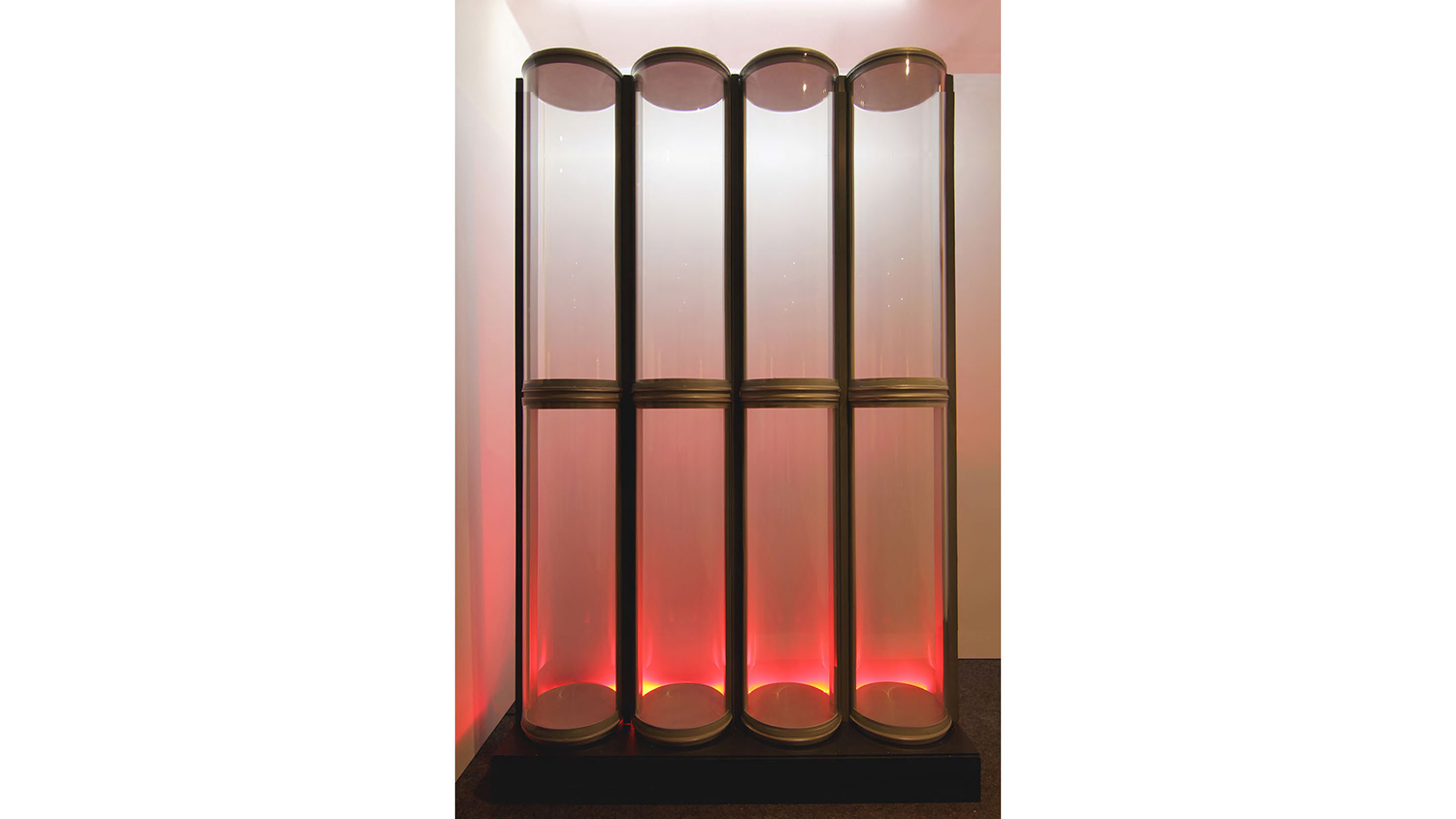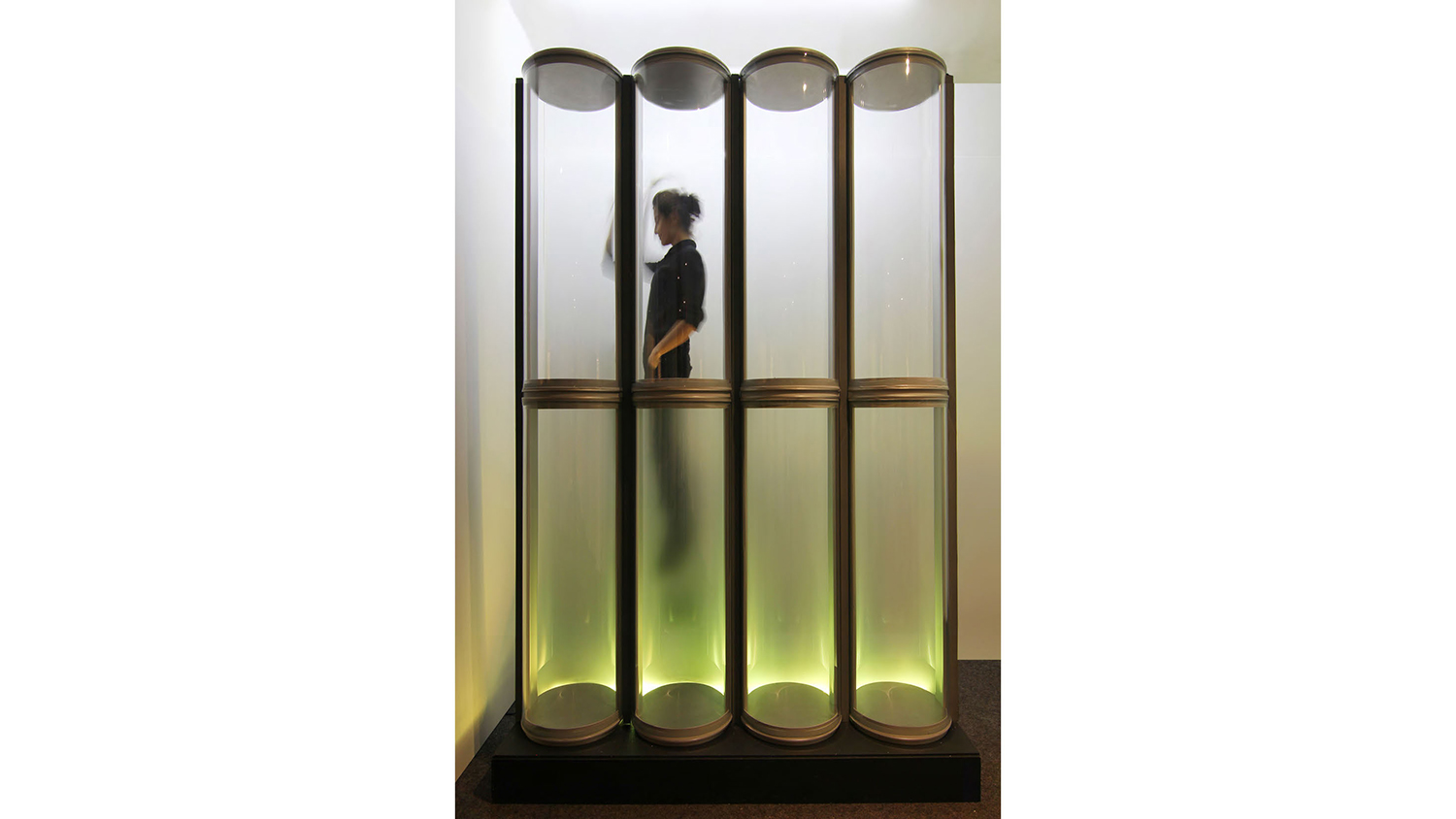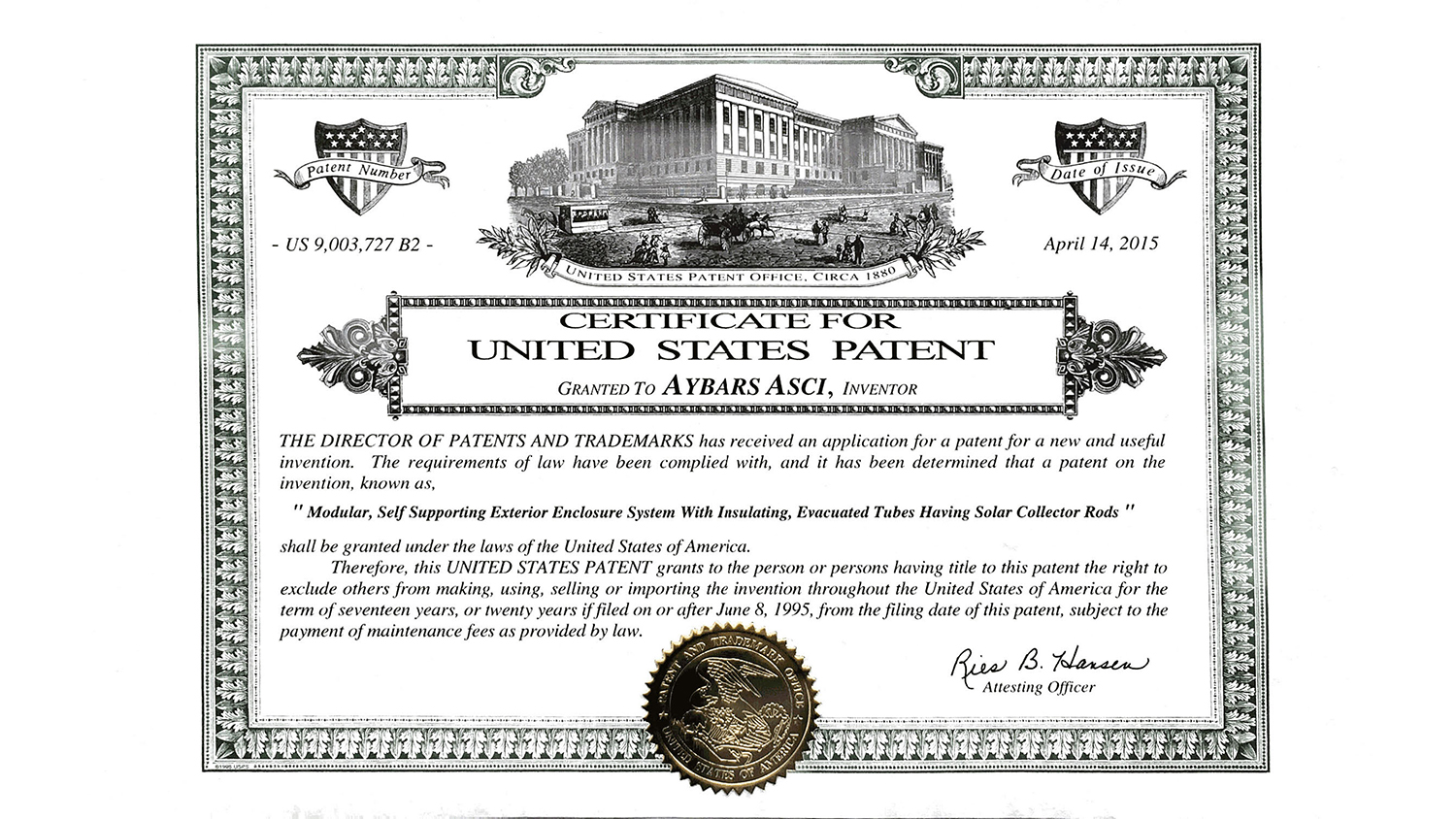The highest energy transfer from building enclosures occurs on the glazed portions of buildings, contributing to large heating and cooling loads and thus causing large energy consumption. The reduction of glazed areas along with high performance coatings or applications of triple glazing are strategies currently used to mitigate this problem.
However, while minimizing glazed areas reduces the energy transfer, it has the adverse effect of limiting views to the outside and limits daylight coming into the building, thus increasing artificial lighting demand, another large energy consuming component in buildings. Furthermore, reduced daylight, and high dependence on artificial lighting diminishes the interior quality of light with a poor color rendition index.
The Vacuum Insulated Glass unit is formed by two uniform-radiused-curved pieces of laminated glass, which are joined to form an evacuated chamber. The absence of air in a vacuum chamber eliminates conductive and convective heat transfer, creating a thermal buffer for both hot and cold climates. The convex inner half glass-lite of the cylinder reflects the incoming solar radiation to its center, concentrating the energy to a single focal point, enabling an efficient solar collector to generate power.
Redirection of solar radiation limits the amount which passes through the glass tubes and into the conditioned space thus, minimizing solar heat loads. Self-supporting due to the structural cross section, the tubes geometry allows for the negative pressures of the vacuum chamber without any additional structural support.
As a building enclosure system, the evacuated tubes provide the advantages of forming a fully glazed façade with the R-value comparable to an insulated solid wall. It can be used practically for the enclosure of any building type. The ability to alter the unit’s translucency or opacity allows for flexibility in adapting to different programmatic demands.
The modular interlocking building enclosure system can be stacked both horizontally and vertically. The system is self-supporting due to the structural depth of the tubes. The curvature of the tube provides a cross section which is able to resist lateral loads, eliminating the need for additional framing or support.
Calculations produced by structural engineers use three different criteria; strength, serviceability, and buckling to determine the structural performance of the unit. Strength considerations include the tube pressure stresses which account for the difference in interior and exterior pressure caused by the vacuum. The geometrical properties of the glass tube facilitate the vacuum chamber to function without any additional structural support.
The negative compression loads created by the pressure differential are calculated along with wind stresses and the unit’s weight to determine the maximum height. Given the parameters of a 14” diameter tube composed of ¼” thick laminated glass under wind pressures of 50psf a span of 44’ is achievable.
The vacuum chamber eliminates conductive and convective heat transfer, acting as a thermal buffer for both hot and cold climates. The convex inner half glass-lite of the cylinder reflects the incoming solar radiation to its center, concentrating the energy to a single focal point, thus enabling an efficient solar collector to generate power. This also minimizes the solar radiation through the glass tubes into the conditioned space, reducing solar heat loads.
The invention provides dramatic thermal performance improvements over other glazed facades through the use of vacuum insulation, by limiting heat transfer through the unit to only radiation over the glazed portion.
Preliminary calculations have returned results of .06 Btu/hr-ft2-f for a 100% window wall ratio, outperforming a baseline envelope of 40% window wall ratio (.55 Btu/hr-ft2-f), and a standard opaque envelope (.104 Btu/hr-ft2-f). Furthermore, the surface temperature of the inner lite of the tubes being closer to room temperature creates a high level of thermal comfort for the occupants.
